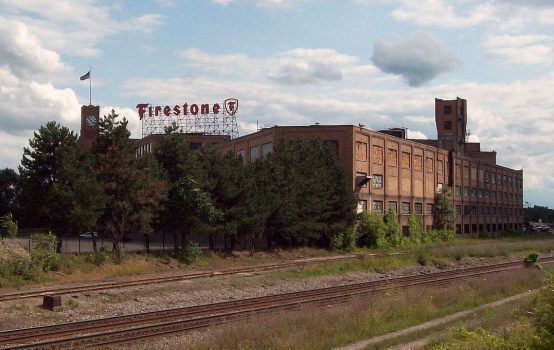Rust Belt Cities Need Investment, Not Gentrification Worries

AKRON, Ohio—There is a type of neighborhood that you never hear about in the gentrification story mostly told by writers living in the coastal centers of power. It is the type of neighborhood where the majority of ordinary people in ordinary cities like Akron actually live.
This type of neighborhood is a lower-income, working-class, mixed-race community, comprised primarily of single-family homes, many of which are owner-occupied.
The standard gentrification narrative is typically about affluent newcomers displacing existing lower-income residents—driving up housing prices, rents, and property taxes to stratospheric heights.
But there are millions of people throughout the cities of the Rust Belt living in neighborhoods with the opposite problem. They are lower-income, working-class homeowners, living in deteriorating homes, with no foreseeable prospects for property appreciation.
The working poor living in these neighborhoods typically cannot afford to reinvest much in their property to begin with, and even the few who can often choose not to, because they will never come close to getting their money back.
These are places where the property values are so low that people have to sell their houses at a loss—if they can even find anyone interested in buying them at all—and where there is little economic incentive for homeowners to improve their properties.
Consequently, over time, these houses begin a long and tortuous cycle of decline and neglect, as they transition from owner-occupancy, to reputable rentals, to disreputable rentals, to vacancy, tax delinquency, abandonment, and eventual demolition – often at public expense.
 South Akron is a perfect example of the type of neighborhood that I am describing. The residential heart of the neighborhood is located about a ten-minute walk from where Firestone Tire and Rubber’s massive industrial complex and world headquarters once stood. The neighborhood reached its zenith in the 1930s, populated by thousands of predominately Eastern European immigrants, many of whom worked at Firestone, and at other nearby machine shops and foundries, at a time when the rubber and tire industry alone employed nearly 60,000 people in Akron.
South Akron is a perfect example of the type of neighborhood that I am describing. The residential heart of the neighborhood is located about a ten-minute walk from where Firestone Tire and Rubber’s massive industrial complex and world headquarters once stood. The neighborhood reached its zenith in the 1930s, populated by thousands of predominately Eastern European immigrants, many of whom worked at Firestone, and at other nearby machine shops and foundries, at a time when the rubber and tire industry alone employed nearly 60,000 people in Akron.
Census tract 5045 is representative of what South Akron looks like today. The median household income is $28,684. The poverty rate is 45 percent. Of the more than 800 housing units, 92 percent are single-family detached homes, and 46 percent are owner-occupied. The typical home was built during World War I. The median value of an owner-occupied house is $62,300. Only 9.1 percent of the population over the age of 25 has a 4-year college degree.
Forty-four percent of the population is white, 34 percent is black, and 22 percent is Asian, Latino, or multiracial. It probably goes without saying that this neighborhood is more racially diverse than 99 percent of the census tracts in the United States.
Yet this is the type of place that is routinely ignored by urbanists and pundits. It is a community that is already racially diverse, and where many residents may be poor, but are also employed, and also own their home. This is the type of place where the binary, coastal gentrification narrative of rich versus poor, or white versus black, simply does not apply.
In many of Akron’s neighborhoods, just like this one, and in neighborhoods throughout the Rust Belt, the problem is not that housing costs are so high that virtually no one can afford to pay the rent. The problem is that houses routinely sell for less than $50,000—which is essentially the point at which, even in a low cost-of-living market like ours, it no longer makes any economic sense to maintain them.
New investment and residential redevelopment is not the enemy of these types of neighborhoods. It is their best friend. If new housing were built, it would help raise the values of existing homes to levels that would at least warrant cost-effective investment in their renovation and rehabilitation.
So what does gentrification look like in a place like South Akron?
It doesn’t look like hordes of bourgeois newcomers building million-dollar homes and displacing long-time residents.
It looks like ordinary middle-class people incrementally drawn back to the neighborhood by private investment in new infill housing construction and rehabilitation of existing homes, all incentivized by the City of Akron’s newly-launched 15-year, 100 percent residential property tax abatement program.
It looks like a $40,000 house that gradually becomes an $80,000 house. In a city where the median household income is $35,000, that $80,000 house is still affordable for the typical family. But the critical difference is, unlike the $40,000 house, the $80,000 house is worth maintaining and improving.
Applying national narratives about gentrification, without understanding the realities of our regional real estate market, can lead people to the mistaken belief that new housing, or any change at all, is bad. But new residential development and private reinvestment is exactly what the traditional working-class neighborhoods of the Rust Belt desperately need. Opposing it is like bringing a fire extinguisher to a flood—it is bringing the wrong tool to the wrong disaster.
Jason Segedy is director of planning and urban development for the City of Akron, Ohio. Segedy has worked in the urban-planning field for the past 22 years, and is an avid writer on urban development issues, blogging at Notes from the Underground. A lifelong resident of Akron’s west side, Jason is committed to the city, its people, and its neighborhoods. His passion is creating great places and spaces where Akronites can live, work, and play.